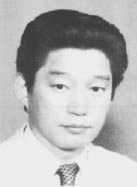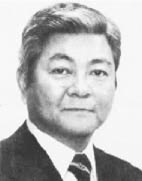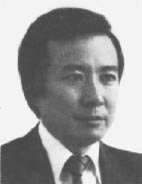JCO Interviews Dr. Weldon E. Bell on TMJ Function and Dysfunction
DR. WHITE Have you been surprised by the recent interest in the TMJ?
DR. BELL Not really. The surprising thing to me is that the profession has been so slow to pick up a thing of such importance. Before Costen, the TMJ was largely ignored; the profession knew it was there, but did little to make it a part of clinical practice. I think the present trend is nothing more than a growing-up of the profession--a realization that the TM joints are truly important in masticatory function.
DR. WHITE There seems to be a lot of conflicting opinion about how the joint works and how dysfunctional or painful joints differ from asymptomatic joints.
DR. BELL I believe the confusion chiefly centers around a misunderstanding of the anatomy and normal functioning of the joint. In 1949, Harry Sicher described the joint in a very lucid fashion. His concept of joint biomechanics, for the most part, has been documented by research in recent years.
DR. WHITE If Sicher's description of the TMJ has been proven correct, why does the confusion persist?
DR. BELL In 1954, the English anatomist, Leonard Rees, produced an excellent description of the joint. He correctly identified the organic attachment of the disc to the medial and lateral poles of the condyle. He showed that rotation between the condyle and disc consisted of a limited sliding movement of the two articular surfaces around a hinge axis--as is true, of course, with other hinge joints. But, unfortunately, he described this movement in words that were misunderstood. He said this rotary movement was "an eccentric hinge movement combined with some gliding".
This was interpreted by Schwartz and others to mean that gross translatory movement was permitted in the lower compartment. This false notion has persisted and has been repeated by several authors to explain clicking--suggesting that such noise was due to the condyle slipping over various parts of the articular disc.
DR. WHITE So there is ordinarily no translatory movement in the lower chamber between disc and condyle?
DR. BELL None at all. Of course, it is true that such sliding movement between condyle and disc does occur, and no doubt relates to disc noises and other interferences--but not in normal joints. I believe this is the chief point of confusion. It is not clearly understood that when these things happen, it is because damage to the joint has destroyed normal rotary movement between condyle and disc, and abnormal translatory movement is taking place.
DR. WHITE Why didn't Rees clarify all this?
DR. BELL He was killed in an airplane accident before his work was published. He did not even get to edit his manuscript. He never had a chance to correct his ambiguities or clarify his concept of normal joint function. I am quite sure that Rees never dreamed his fine work would be used as documentation for error.
DR. WHITE Then how does the joint work?
DR. BELL To answer that would take an entire issue of the Journal, but I will try to simplify it. There is a general idea that the condyle articulates with the temporal bone, with a meniscus interposed between the two bones. That is the way it looks on the radiograph. Actually, the condyle articulates not with the temporal bone, but with the articular disc, and forms a separate joint--a simple hinge joint--the disc-condyle complex. It is this complex that articulates with the articular eminence. Thus, normal movement between condyle and disc is restricted to rotation in the sagittal plane around a hinge axis that passes through the medial and lateral poles of the condyle. All translatory movement normally takes place in the upper joint. The TM joint can be visualized as a simple hinge joint that slides along the articular eminence--a hinge joint with a movable hinge axis.
DR. WHITE What is the difference between the temporomandibular joint disc and a simple meniscus as in other joints?
DR. BELL The TMJ disc is called a meniscus, but this is an anatomical misnomer. The word comes from the Greek meniskos, meaning crescent. In the knee, each of the two menisci is a crescent-shaped fibrocartilagenous structure that is attached at one side to the articular capsule, but with a free edge extending into the joint cavity. It is a wholly passive structure that does not enter into joint function except to facilitate lubrication of the articular surfaces.
The disc in the TM joint is quite a different structure. It not only divides the joint cavity, but it converts the joint into two separate and functionally different components. It is not just an interposed structure; it has true articular facets on its upper and lower surfaces, thus becoming a determinant of joint movement in both compartments. It is not just attached to the capsule, but is separately attached by true ligaments to the mandibular condyle. It is not just a passive structure; it has its own power system--the superior lateral pterygoid muscle in front and the elastic superior retrodiscal lamina behind. In normal function, it can move independently of both condyle below and articular eminence above. It is not only an active participant in TM movement, but it has an essential role in normal joint function as well. The temporomandibular articular disc is a unique structure. There is nothing similar to it anywhere else in the body.
DR. WHITE This independent movement you speak of is not of a translatory type?
DR. BELL No, it is purely rotary. It is not a sliding or translatory movement at all. If damage to the disc-condyle complex permits gross sliding movement, normal joint function is no longer possible.
DR. WHITE What is the main purpose of the TMJ disc?
DR. BELL Its most important function is to maintain sharp contact of articulating surfaces during all functional movements, especially during the chewing strokes and maximum intercuspation that
are required for mastication. This is the reason for the separate power system. It is a basic tenet of orthopedics that all mobile joints must remain in sharp contact at all times or else, by definition, dislocation occurs.
DR. WHITE Is the TMJ more susceptible to dislocation than other joints?
DR. BELL The TM joints are especially vulnerable because of the rapid and marked changes in interarticular pressure during masticatory function. To maintain sharp contact requires muscle action. Ordinarily, this is taken care of by the elevator muscles that cross the joint. The TM joint, however, is freely movable and capable of unusual translation. It is also subject to a wide variety of stresses that threaten separation and dislocation of the articulating parts.
DR. WHITE How does the disc prevent dislocation?
DR. BELL The disc performs that task by rotating on the condyle. By rotating on the condyle, thicker portions of the disc can be correctly positioned to compensate for varying interarticular pressures.
DR. WHITE What causes the disc to rotate on the condyle?
DR. BELL Although the gross relationship between the condyle and disc is determined by the contour of the disc as it relates to the width of the disc space, the actual sharp contact is maintained by muscle action of the superior head of the lateral pterygoid muscle anteriorly and the elastic retrodiscal tissue posteriorly. At rest and during the first part of forward translation, muscle tonus in the superior lateral pterygoid muscle exceeds the posterior traction of the relaxed retrodiscal tissue. The anterior traction applied to the disc keeps the parts in sharp contact.
DR. WHITE What happens in closing movements?
DR. BELL When you bite something, the elevator muscles in the superior head of the lateral pterygoid simultaneously contract. The elevator muscles cause the return translatory movement, but the superior head of the lateral pterygoid causes the disc to rotate anteriorly as far as the width of the articular disc space will permit. Again, this permits sharp contact between the articulating parts.
DR. WHITE Then this is not an anterior or posterior sliding of the disc.
DR. BELL That is correct. If the space widened sufficiently, a sliding movement could permit dislocation; the disc space would collapse, the condyle would move superiorly against the temporal bone, and the disc would be trapped anteriorly.
DR. WHITE This seems to contradict the notion that the disc and condyle are moved together by action of the superior and inferior heads of the lateral pterygoid muscle as the condyle is moved forward in translatory movement.
DR. BELL That is correct. In recent years, McNamara and others have shown that the superior and inferior lateral pterygoid muscles act independently--almost reciprocally. At rest and during empty jaw movements, the superior lateral pterygoid muscle remains essentially inactive, with only muscle tonus exerting tractive force on the disc. It contracts actively and relaxes in coordination with the
elevator muscles--not with the inferior lateral pterygoid. Although it does furnish some holding action on the condyle during power strokes, its chief function is to supply strong tractive force on the disc for joint stability, as I have already described.
DR. WHITE Does the inclination of the condylar path affect these rotary movements?
DR. BELL Yes, very significantly. The greater the vertical inclination of the articular eminence and the more dramatic the contour of the disc, the more rotation of the disc in a posterior direction is required to maintain surface contact with the articular eminence. In steeply inclined joints, the maintenance of normal disc contact is all the more important to normal joint function.
DR. WHITE Today it is easy to get the idea that there is a single cause of clicking. How do you feel about this?
DR. BELL It should be pretty obvious that the matter of abnormal disc noise is not as simple as just a slipping of the condyle over different portions of the articular disc, as has been believed since the days of Schwartz. The work of Paul Toller in England is significant. He has shown that just prior to clicking, there is obvious deceleration of movement, a pause, and a widening of the articular disc space. Then the click occurs simultaneously with an acceleration of movement. Major Ash has shown that EMG activity in the lateral pterygoid muscle increases just prior to the click and drops immediately after. Applying principles of physics, it appears that clicking occurs as the direct result of mechanical obstruction of the moving parts, which tends to wedge the articular surfaces apart as movement is arrested. Then, as additional force is applied and the obstruction is overcome, the noise accompanies a renewed burst of movement. The question of cause revolves around the possible causes of obstruction or jamming of the disc.
DR. WHITE So the muscle tenses as it meets the resistance, trying to overcome it?
DR. BELL Muscle action is applied sufficiently to overcome the obstruction, and noise is the result of obstructed movement. This is a far cry from the notion that noise occurs when the condyle bumps over different segments of the disc, as has been incorrectly attributed to Rees. This notion is still in vogue.
DR. WHITE So the common concept of joint dysfunction being caused by the disc translating anteriorly and posteriorly over the condyle is wrong?
DR. BELL No, it is not wrong--but it probably does not occur as frequently as many believe. The point is this: it does not occur in normal joints. Interference symptoms due to displacement of the articular disc mean that something is wrong in the joint.
DR. WHITE Big wrong?
DR. BELL Yes, big wrong. Normally, the disc rotates on the condyle and that is all. To permit gross displacement, two things have to happen: there must be deterioration in the ligaments that attach the disc to the poles of the condyle, and there must be loss of contour of the disc.
DR. WHITE When the disc contour is lost, what happens?
DR. BELL Moffett says, quite correctly, that when the contour of the disc is lost, it also loses its self-centering capability. When the articulating surfaces between disc and condyle are no longer an arc of the same circle--when the disc becomes flattened--then anterior and posterior traction on the disc may cause sliding displacement rather than simple rotation. Such degeneration permits the disc to be displaced anteriorly in the resting joint by muscle tonus action of the superior lateral pterygoid muscle.
DR. WHITE Does the superior lateral pterygoid muscle then pull the disc straight forward?
DR. BELL No. Since the muscle attaches to the disc anteromedially, the displacement is not straight forward, but torqued. Then, when the translatory cycle begins, the condyle jams against the malposed disc and obstruction occurs. Discrete interference symptoms take place.
DR. WHITE Does it take much deterioration for this to happen?
DR. BELL Yes. Considerable damage to the disc-condyle complex must precede any gross functional displacement of the articular disc. Deterioration of the attaching ligaments and loss of discal contour are necessary for sliding movement to take place between disc and condyle; and in order for the disc to be completely dislocated in front of the condyle, the inferior retrodiscal lamina must also be destroyed, because this ligamentous structure normally prevents gross prolapse of the articular disc.
DR. WHITE In your 40 years of clinical practice, did you ever see a patient whose temporomandibular joint problem was caused by orthodontic treatment?
DR. BELL I can't answer that. I have seen patients with temporomandibular disorders of many different types. Some had orthodontic correction of the occlusion, some had other dental treatment, and some had neither. If the disorder did appear to relate to occlusal disharmony, who could say whether the disharmony was caused by the orthodontist or whether it was there prior to such therapy? How could one make a reasonable judgment without having examined the patient before treatment was done?
DR. WHITE I'm interested in this because there is a growing number of dentists who want to believe that the orthodontist is responsible for most of the TMJ problems.
DR. BELL I don't think there is any way that could be documented.
DR. WHITE While reviewing your book, Clinical Management of Temporomandibular Disorders, it seemed to me that the book was mainly an effort to present an accurate description of the way the joint works, and that it did not have the evangelical fervor of so many other books.
DR. BELL I am a teacher and a clinician, not a researcher or scientific investigator. I have nothing to sell except truth. In writing the book, I tried to present only the documented facts, and logical reasoning based on many years of clinical experience where documentation was lacking.
DR. WHITE Thank you for sharing your thoughts with us and providing insightful information on the anatomy and function of the TMJ.




